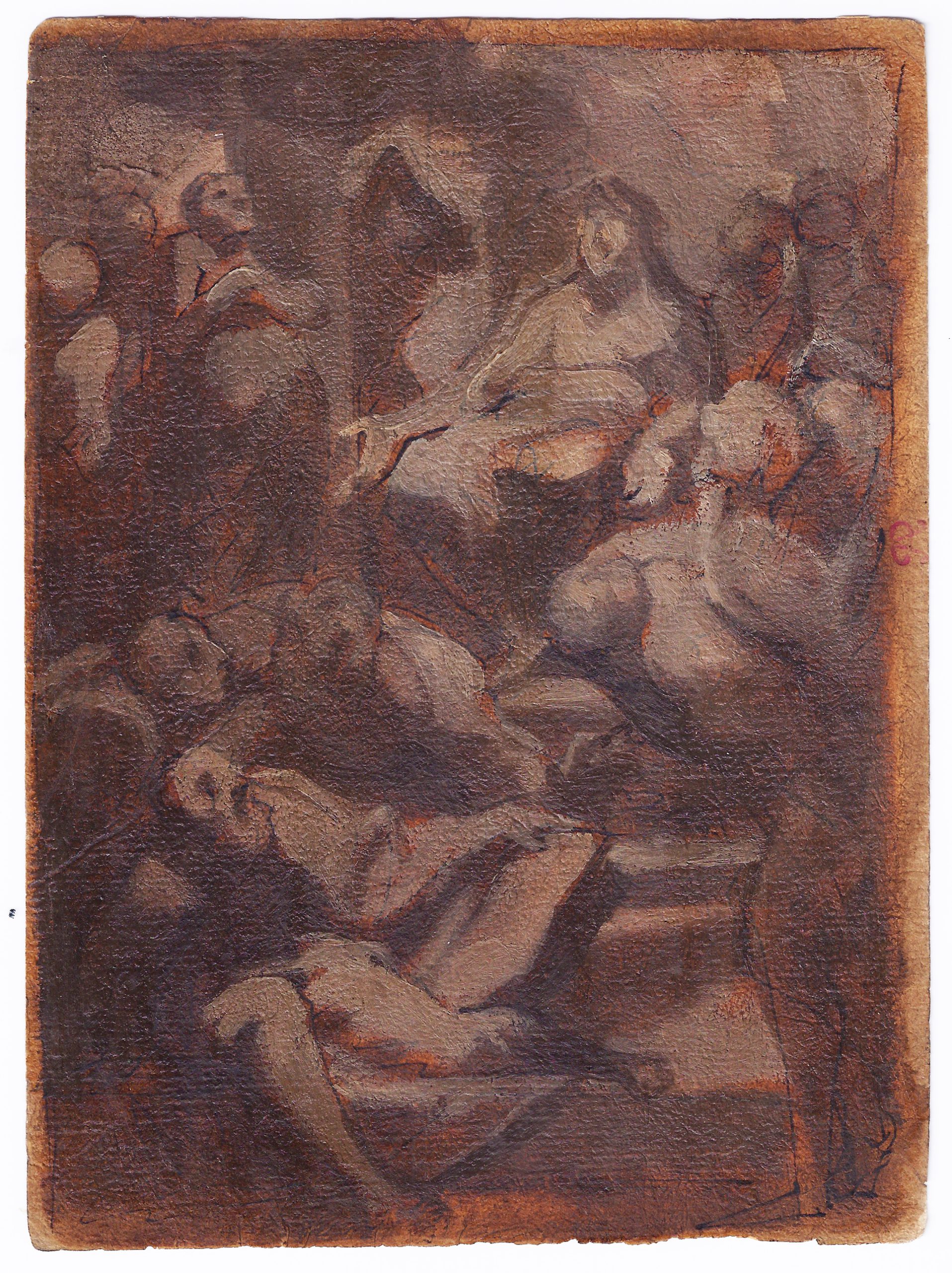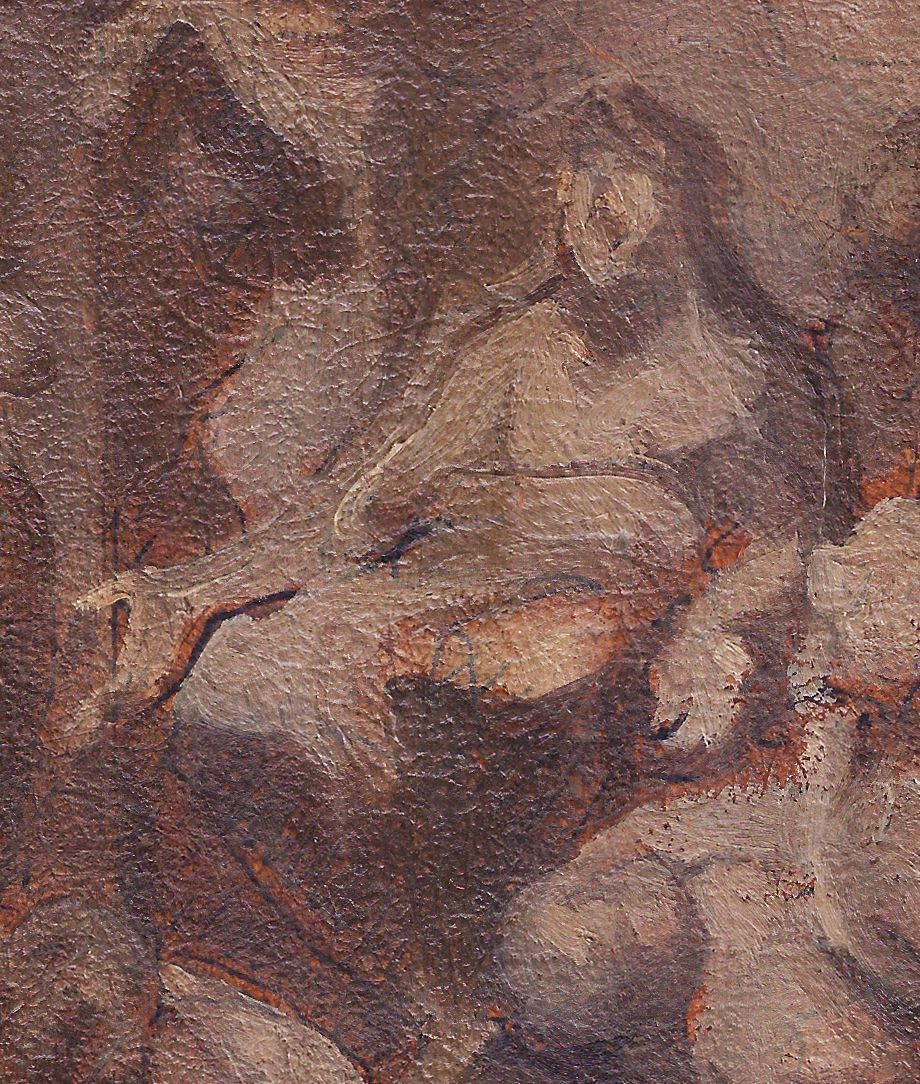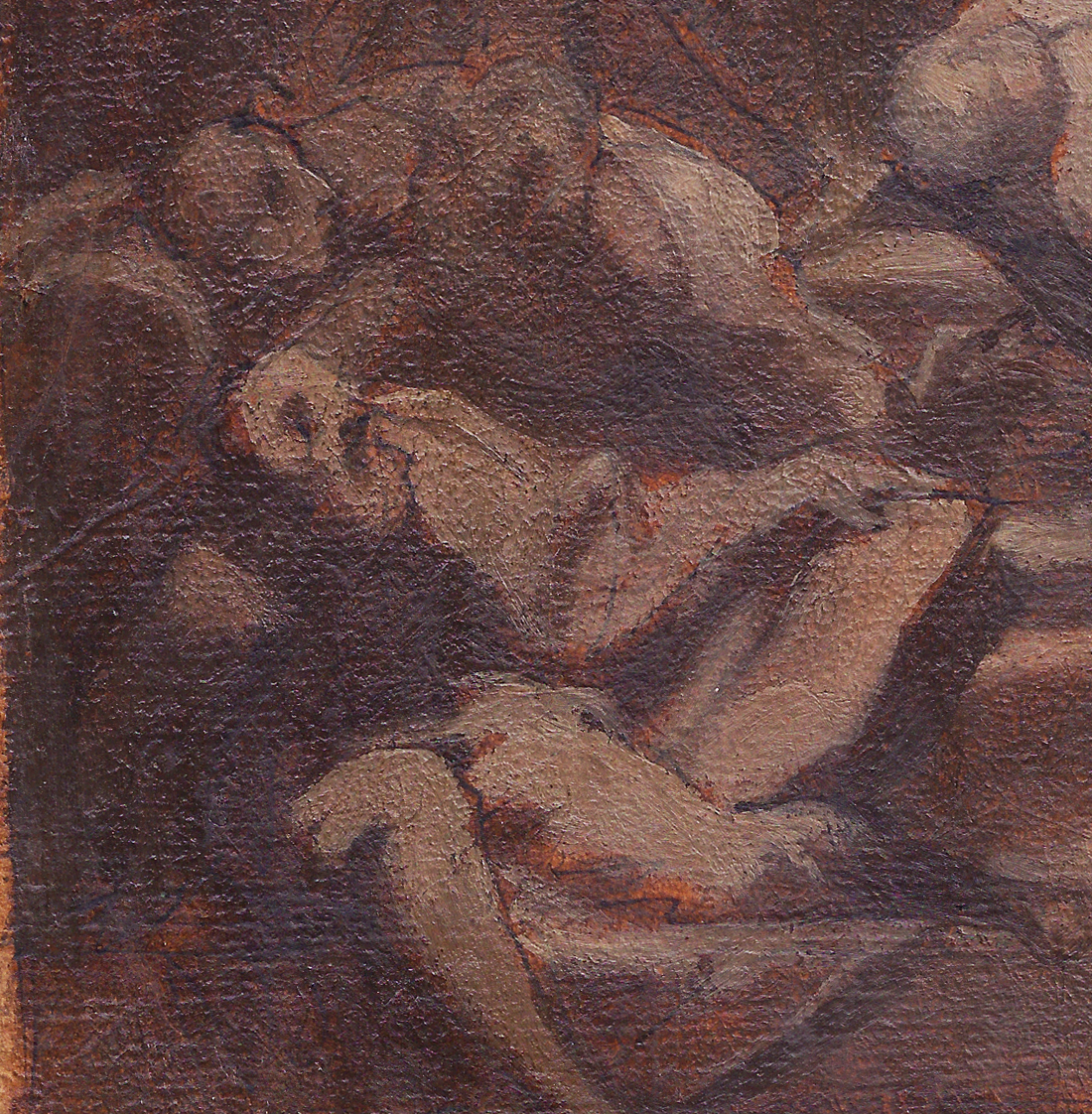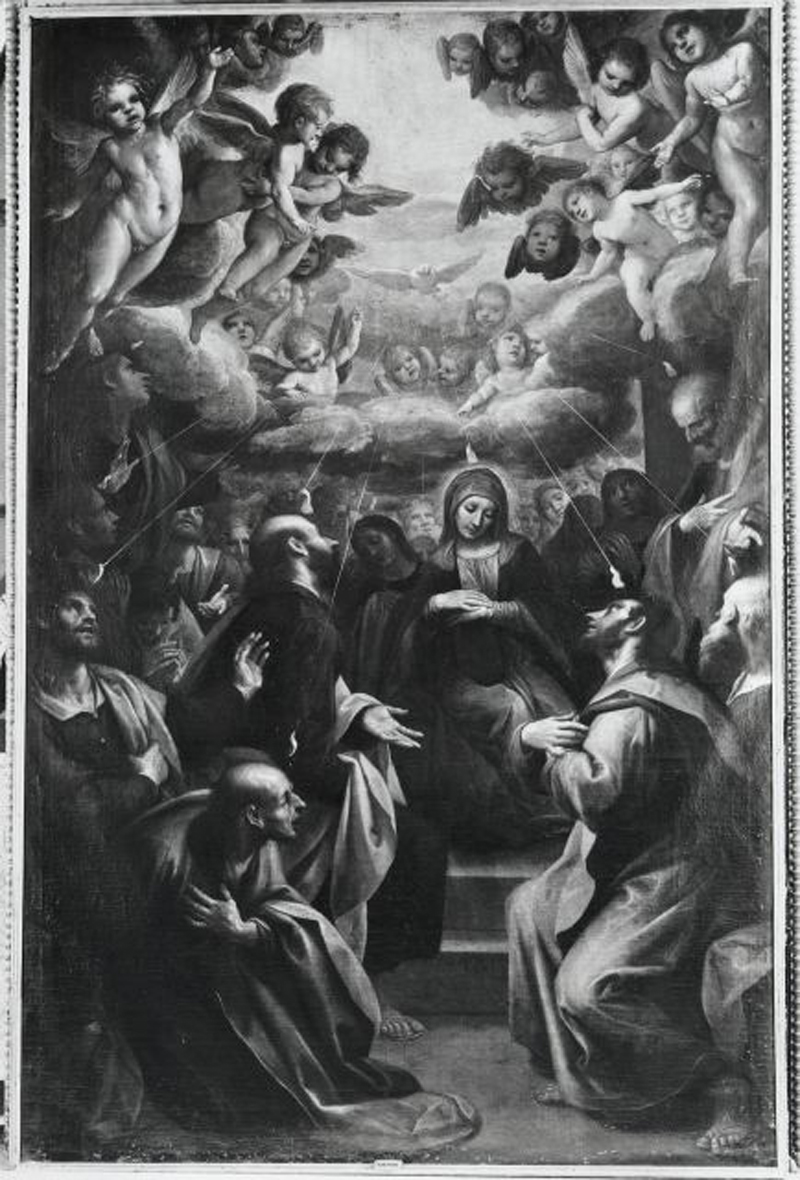PIETRO SORRI (San Gusmè c.1556 - 1622 Siena)
Pietro Sorri (San Gusmè c.1556 - 1622 Siena)
The Pentecost
Pen and brown ink and oil paint on yellow-brownish paper, 211 x 154 mm (8.3 x 6.1 inch)
Provenance
~ Angelo Prada (1859–1934), Casalpusterlengo, Italy (Lugt 3773)
~ Private collection, Italy
***
Pietro Sorri was born in San Gusmè, halfway between Siena and Arezzo.1 He was initially apprenticed to Arcangelo Salimbeni (c.1536–1579) in Siena, and then moved to Florence, where he entered the studio of Domenico Cresti, called Passignano (1559–1638), whose daughter he later married. Sorri successfully assimilated Passignano’s Mannerism, and was furthermore much influenced by Tintoretto and Palma il Giovane during a sojourn in Venice from 1582 to 1587. Among his earliest masterpieces is the Adoration of the Magi of 1588 in the Duomo in Siena.
Sorri was a restless traveller, and lived from 1592 to 1595 in Lucca, and in Genoa from 1595 to 1597, where he taught Giovanni Carlone and Bernardo Strozzi. In Pavia he collaborated with Alessandro Casolani on frescoes for the Certosa di Pavia. Between 1599 and 1603 he worked in Siena, where Astolfo Petrazzi was his pupil. Sorri was in Pistoia in 1603 and in Florence in 1605, where he worked on the Capella Brunaccini in the Basilica della Santissima Annunziata, together with Ottavio Vannini. He remained in Florence until 1610, was then active in Rome until 1612, upon which he returned to Siena. Works by Sorri were included in a gift by Grand Duke Cosimo II de’Medici to the Convento de las Descalzas Realas in Vallodalid. Like Lodovico Cigoli in Florence, Sorri was one of the few Tuscan artists capable of painting in the Venetian style.
Sorri frequently worked out compositional ideas in small-scale sketches in grisaille or brunaille oil paint, such as the present work. The rather unusual technique may have been influenced by similar sketches by Tintoretto. Sorri's sketches range from quite finished works, such as the Multiplication of the Loaves and Fishes in the Uffizi, Florence,2 to more loosely painted sketches, such as the Presentation of the Virgin, also in the Uffizi (fig.).3
Our sketch is particularly freely executed, with areas of the yellowish paper exposed, and the initial design indicated in pen and brown ink in a geometric shorthand style. It is possible it is a first idea, a ‘primo pensiero’, for Sorri’s altarpiece of the same subject of 1608 in the Pinacoteca Nazionale di Siena: although the altarpiece is grander in scale and conception, the basics of the composition are comparable, with the Virgin seated at the top of some steps, kneeling apostles at the left, and standing apostles in profile at the right (fig.).4 The altarpiece was donated by the artist’s wife, Arcangela Cresti, to the church of Santa Maria di Provanzano in Siena.
1. The best account of Sorri’s life is given by Laura Martini in: Alessandro Bagnoli (ed.), L’Arte a Siena sotto i Medici (1555–1609), exh. cat. Siena (Palazzo Pubblico) 1980, pp. 94-118. See also: Laura Martini ‘Aggiunte a Pietro Sorri’, in: Annali della Fondazione di Studi di Storia dell’Arte Roberto Longhi, Florence 1984, pp. 87-113.
2. Oil on paper, 240 x 425 mm; inv. no. 19154; Bagnoli, op. cit., pp. 112-13, cat. no. 41, repr.
3. Oil on paper, 420 x 280 mm; inv. no. 19156; Bagnoli, op. cit., p. 118, cat. no. 45, repr.
4. Oil on canvas, 399 x 218 cm; Pinacoteca Nazionale di Siena, inv. no. 631.




